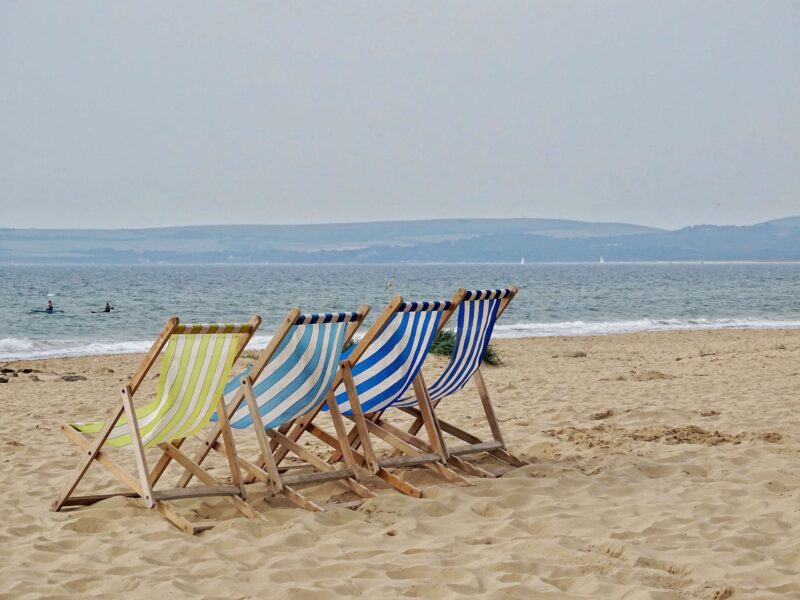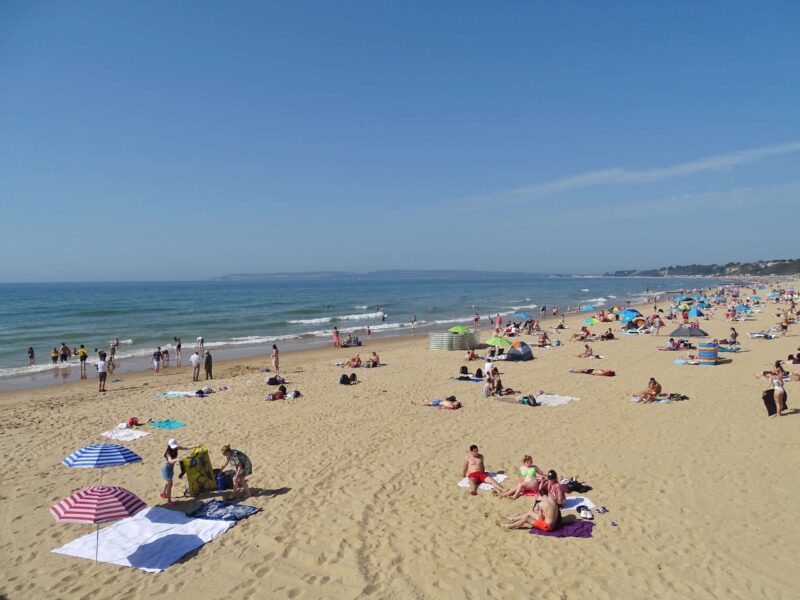Burning Britain : What can property owners learn from the heatwave?
The UK couldn’t stand the heat(wave) this week, with record temperatures recorded across the country.
Temperatures went over an unprecedented 40.2 degrees in areas across the UK this month, with temperatures in the high 30s elsewhere during the day… and we don’t suppose it escaped anyone’s notice that it was really very warm at night too.
Home Emergency Insurance for £130
- ✓ Covered up to £1,000 per emergency
- ✓ £250 for overnight accomodation
- ✓ Call out, labour & parts included
But, as unprecedented as it was, experts have warned that extreme heat is something we should get used to in the summer months, thanks to climate change.
It goes without saying that the heat is a major concern and an indicator of the struggling health of our planet, so let’s take a look at some practical steps the property industry can take, so that next time (because there will be a next time!) we can all be more prepared.
Did the UK cope with the extreme heat?
The issue is that the UK is, historically, a cooler country. Yes, we can have one or two weeks a year of glorious sunshine, but we are known to be a greyer, damper island.
Our homes are designed to keep warm during the long winter months and chilly springs and autumns – so they are completely ill-equipped for the tropical conditions we experienced this week.

The same goes for almost everything in this country that was affected by the heat. This is not what we’re used to, so we just aren’t built for it! But as these temperatures become the norm – and potentially get even hotter – things are going to have to change.
How many major heatwaves has the UK experienced in the last 20 years?
These include:
- 2003: European heat wave saw temperatures reach a record 38.5℃ on 10th August
- 2013: British Isles heatwave, 19 days at 33℃ during the summer
- 2018: British Isles heatwaves, during June, July, and August
- 2019: European heatwaves, new record set in Cambridge, 38.7℃
- 2021: British Isles heatwave, July 2021
What will happen to UK temperatures in the next 5-10 years?
The summer of 2018 was the equal-warmest summer for the UK along with 2006, 2003 and 1976. Climate change has already increased the chance of seeing a summer as hot as 2018 to between 12-25%. With future warming, hot summers by mid-century could become even more common, near to 50%.
The MET office added that by the 2070s, the temperature of hot summer days shows increases of 3.8 °C to 6.8 °C, under a high emissions scenario. This is a huge increase on the temperatures we’re already experiencing. So everything from our railway systems to our homes are going to have to adapt to survive.
How does this year compare to the last 10 years in the UK?
The average temperature over the most recent decade (2009-2018) was 0.3 °C warmer on average than the 1981-2010 average, and 0.9 °C warmer than the 1961-1990 average.
Consider how hot it was on Tuesday and think about how much hotter it will be by the 2070s, if the MET Office’s predictions are correct. There will need to be some drastic changes in the UK in order to live with that change so that lives are not put at risk and life can continue as normal.
How many UK homes have air conditioning?
More recent estimates suggest that over 55% of homes still are without air conditioning.
An easy solution is an individual air conditioning unit, which can be stored away in the cooler months and moved wherever needed in the home in the hotter months. Alternatively, you could install built-in air conditioning.
Standalone air conditioning unit | Built-in air conditioning |
£200 - £600 depending on brand and spec | Approximately £500 for the unit and up to £1,000 per installation |
Doesn’t have to be installed | Has to be installed |
Can be moved where needed | Will need to be installed wherever required |
Can be noisy | Usually the quieter option |
They are quite large, you will need to find space for it | Smaller and installed like a radiator, so against the wall and out of the way |
Is air conditioning environmentally friendly?
With that in mind, switching to energy efficient liquid refrigerants such as ozone-safe hydrofluorocarbons (HFCs) and other alternative refrigerants like ammonia has become a priority across Europe and the UK.
Harmful chlorofluorocarbons (CFCs) are being gradually phased out here – and that has been the case since 1995. Halogenated chlorofluorocarbons (HCFCs) were phased out of production more recently in 2020.
Bearing in mind the UK’s ‘net zero’ targets, if there is a big move towards more air conditioning in the UK, the push should be towards the ozone-safe options.

How does the rest of Europe cope with the heat?
Let’s look to Europe to see what we can learn from their example.
In Europe, construction companies, homeowners and landlords alike use lots of exposed rock, stone or brick, and good insulation, as these thermal masses cool in the night. But this isn’t the only trick up their sleeve:
- Plants. They use greenery in the form of plenty of plants inside, to help aerate rooms. Plants are pretty trendy right now, so your tenant probably already has several!
- Pale colours. The predominant colour used for facades is clear, whitewashed walls, as these reflect heat the best. Rented properties are usually painted in neutral tones, so stick to these!
- Creating shade. Awnings and shutters keep houses cool (and are closed) during the heat of the day. Consider installing blinds in your property, so they can be closed on hot days to keep the property cooler
- Light textiles. Linen beds and furniture covers are commonplace, as is lighter-coloured furniture and clothing. If you are renting your property furnished, going for lighter colours will feel counterintuitive as they will show wear and tear more quickly. But it’s worth considering, especially if you can get sofas, etc. with removable easy-to-clean covers
- Window placement. More windows face the street than they do here, because that is where air circulates more freely. There’s not a lot that landlords can do about this – but hopefully it’s something we’ll see more of in future new builds when you come to invest in buy-to-lets or for tenants looking for their first home!
UK building regulations
Again, with that ‘net zero’ target in mind, what UK building regulations are in place for houses and new build properties to comply with energy saving, reducing carbon emissions and heating?
Any new radiator installed will require a Thermostatic Radiator Valve (TRV). A TRV gives better control over the individual room temperatures. It is also encouraged to place TRV’s on existing radiators.
Reasonable provision shall be made for the conservation of fuel and power in buildings by limiting heat gains and losses, through:
- Thermal elements and other parts of the building fabric
- Pipes, ducts and vessels used for space heating, space cooling and hot water services
It is also mandatory to provide fixed building services which:
- Are energy efficient to a reasonable standard
- Have effective controls
- Are commissioned by testing and adjusting as necessary to ensure they use no more fuel and power than is reasonable in the circumstances.
The minimum energy performance requirements are:
- Nearly zero-energy requirements for new buildings
- Where a building is erected, it must be a nearly zero-energy building
- Where a building is erected, it shall not exceed the target CO2 emission rate for the building that has been approved pursuant to the approval, applying the methodology of calculation and expression of the energy
- When a dwelling is erected, it shall not exceed the target fabric energy efficiency rate for the dwelling that has to be approved
The emphasis still appears to be more on keeping properties warm over keeping them cool, but investing in a new build, whether you are a landlord looking for a buy-to-let or a first-time buyer, could still be the best way to guarantee a comfortable summer in the property.

Are there any UK regulations that focus on keeping buildings cool?
In short, yes.
Regulations state that comfort cooling systems should have independent temperature and timing controls ‘for each control zone and for each terminal unit’.
It adds that ‘if both heating and cooling are provided in the same space, the controls should prevent them from operating simultaneously.’
Exposed refrigeration pipework should be insulated and enclosed in protective trunking, and there are very detailed rules about the specific fan power that mechanical ventilation systems should not exceed.
So, should landlords be making changes now?
While there is no immediate need, it is something you should be thinking about because this is becoming the new normal. Much as tenants are currently looking for energy efficient properties to save on energy bills or space to work from home, keeping cool in the summer will start to climb their list of priorities.
- EPC changes. The upcoming EPC changes are part of the UK’s net zero targets, so when you are working to improve the efficiency of your property, you could consider ways to keep the property cool in the summer, as well as warm in the winter
- Fully furnished. If you rent fully furnished, you could consider including an air conditioning unit, if you can’t afford to install built-in air conditioning
- Consider your next investment. Many properties in the UK are significantly old and just not designed for the new weather. So when you come to invest in your next buy-to-let, consider looking at new builds that are likely to be better equipped to cope or, if looking at an older property, think about how you could adapt it to be more fit for purpose
- Get covered. Insurance claims go up in the winter, usually with boiler breakdowns and burst pipes. But summer claims could rise as the heat causes fires so you’ll want to make sure that you have Home Emergency and Landlord’s Building Insurance to cover yourself. Book a call with one of our advisors to find out more!